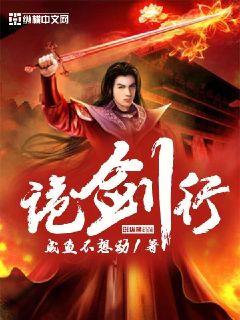
Certainly! Here's the structured article on "Optimizing Training Performance through Nutrition and Diet for Professional Athletes":
**Abstract:**
Professional athletes rely heavily on nutrition and diet to enhance their training performance. This article explores key factors that optimize their performance through dietary strategies. It examines the role of macronutrients, micronutrients, hydration, and timing of meals in maximizing athletic potential. By understanding and implementing these factors, athletes can achieve peak performance and maintain optimal health.
---
**1、Macronutrients:**
Macronutrients play a fundamental role in the diet of professional athletes, influencing energy levels, muscle recovery, and overall performance.
Athletes typically require a balanced intake of carbohydrates, proteins, and fats to meet their energy demands and support muscle repair.
Carbohydrates serve as a primary fuel source, especially during high-intensity activities, emphasizing the importance of adequate intake and timing to sustain performance.
Proteins are essential for muscle repair and growth, with athletes needing slightly higher amounts to recover effectively from training sessions.
Timing protein consumption around workouts is crucial for maximizing muscle synthesis and adaptation to exercise-induced stress.
A variety of protein sources, including lean meats, dairy, and plant-based options, offer athletes flexibility in meeting their nutritional needs.
Healthy fats contribute to sustained energy levels and support overall health in athletes, emphasizing sources like nuts, seeds, and fatty fish.
A balanced intake of omega-3 and omega-6 fatty acids aids in reducing inflammation and optimizing recovery post-training.
Adjusting fat intake based on training intensity and individual metabolic needs helps athletes maintain optimal body composition and performance.
Carbohydrates are critical for replenishing glycogen stores and providing quick energy during intense exercise sessions.
Choosing complex carbohydrates such as whole grains and vegetables ensures sustained energy release and supports prolonged athletic performance.
Strategic carb-loading before competitions or high-demand periods helps athletes maximize glycogen storage and enhance endurance.
---
**2、Micronutrients:**
Beyond macronutrients, micronutrients are essential for maintaining overall health, supporting immune function, and optimizing athletic performance.
Athletes require adequate intake of vitamins and minerals to support physiological processes, including bone health, oxygen transport, and muscle contraction.
Key micronutrients such as iron, calcium, vitamin D, and antioxidants play crucial roles in reducing the risk of injury and illness among athletes.
Iron is vital for oxygen transport and energy production, particularly significant for endurance athletes to prevent fatigue and optimize performance.
Calcium supports bone health and muscle function, essential for maintaining skeletal integrity and reducing the risk of stress fractures.
Ensuring sufficient intake of these minerals through diet and, if necessary, supplementation helps athletes meet their unique nutritional demands.
Vitamins such as vitamin D, C, and E contribute to immune function and recovery, aiding in the repair of muscle tissue and reducing oxidative stress.
Antioxidants from fruits, vegetables, and nuts help mitigate exercise-induced inflammation and support cellular repair processes post-exercise.
Strategies to incorporate a diverse range of micronutrient-rich foods into an athlete’s diet promote overall health and optimize training adaptations.
Hydration is critical for maintaining performance and preventing dehydration-related complications during training and competition.
Athletes should monitor fluid intake to replace losses through sweat, adjusting consumption based on environmental conditions and individual sweat rates.
Optimal hydration supports thermoregulation, nutrient transport, and cognitive function, enhancing overall athletic performance and recovery.
---
**3、Timing of Meals:**
The timing of meals and nutrient intake around training sessions is crucial for optimizing energy availability, promoting recovery, and supporting adaptation to exercise stress.
Strategic meal timing helps athletes maximize glycogen storage, enhance muscle protein synthesis, and minimize muscle breakdown.
Pre-exercise nutrition focuses on providing adequate carbohydrates for fuel and minimizing gastrointestinal distress during workouts.
Consuming a balanced meal or snack containing carbohydrates and a moderate amount of protein 2-4 hours before exercise provides sustained energy and supports muscle function.
Hydration before exercise ensures adequate fluid balance and enhances thermoregulation during physical exertion, optimizing performance and reducing the risk of dehydration.
Immediately following exercise, consuming a combination of carbohydrates and proteins within the first 30 minutes to 2 hours supports glycogen replenishment and muscle repair.
Timing protein intake post-exercise stimulates muscle protein synthesis, facilitating recovery and adaptation to training-induced stress.
Incorporating micronutrients and fluids into post-exercise meals aids in rehydration, replenishment of electrolytes, and overall recovery.
Strategically timing meals and snacks throughout the day maintains stable blood sugar levels and sustains energy for consistent training performance.
Adjusting nutrient intake based on training volume and intensity helps athletes meet their energy demands and achieve optimal nutrient timing for enhanced performance.
Individualized nutrition plans tailored to training schedules and performance goals optimize nutrient timing strategies, supporting long-term athletic success.
---
**4、Conclusion:**
Optimizing training performance through nutrition and diet involves a comprehensive approach focusing on macronutrients, micronutrients, hydration, and meal timing.
By understanding the role of each component and implementing evidence-based strategies, athletes can enhance performance, support recovery, and maintain overall health.
Continued research and personalized nutrition plans are essential to meet the unique needs of professional athletes and maximize their athletic potential.
Overall, integrating these key factors into a structured nutrition plan empowers athletes to achieve peak performance and excel in their respective sports.
### 文章摘要
卫猛,中国足球的传奇人物,其从草根到巅峰的足球生涯充满了坎坷与辉煌。从早年的青涩探索到国内外联赛的风雨兼程,再到代表国家队征战世界舞台,他用坚韧与才华书写了一段足球传奇。本文将从他的职业起步、国内外联赛生涯、国家队征战以及足球后的影响四个方面,深入探讨卫猛这位足球英雄的辉煌历程。
---
卫猛出生于北京,从小展现出对足球的热爱和出色的天赋。他的足球生涯始于哪些青年训练营?
在他职业生涯的初期,他经历了哪些艰难的起步阶段?
他是如何从一个不被看好的年轻球员逐步蜕变成球队的核心?
卫猛在国内外的俱乐部联赛中扬名立万。他首次进入顶级联赛的经历如何?
他在国外联赛中的表现如何,对他的职业生涯有何重要影响?
他在俱乐部中的角色如何演变,从而成为球队不可或缺的一员?
作为中国国家队的一员,卫猛在国际赛场上展现了怎样的风采?
他在世界杯、亚洲杯等赛事中的关键表现有哪些?
他作为队长如何引领球队,在国际赛事中取得了怎样的成绩?
卫猛退役后,他在足球界及社会其他领域的影响力如何体现?
他如何致力于足球青训和普及工作?
他的个人成就对中国足球的发展有何深远的影响?
总结:
卫猛不仅是一位杰出的足球运动员,更是中国足球的象征。他的传奇经历不仅激励着一代又一代的年轻球员,也为中国足球的发展奠定了坚实的基础。他的足球生涯不仅仅是一个个胜利和荣誉的堆积,更是一部为人津津乐道的传奇故事。
卫猛的影响不仅仅局限于球场,他通过自己的努力和奉献,将足球推向了一个新的高度,成为中国足球史上不可或缺的重要人物。
文章摘要的内容
瓦格纳是德国足球的代表之一,他从德甲联赛的新秀逐步成长为国家队的核心球员。本文将深入探讨瓦格纳在职业生涯中的关键转折点和成长历程,分析他在俱乐部和国家队中扮演的角色,以及他的技术特点和领导能力如何塑造他成为德国足球的重要组成部分。
瓦格纳年少时期的足球生涯如何展开,他是如何在德国足球联赛中崭露头角的?
从青训开始,瓦格纳在哪些方面展现出了超凡的天赋?
他在年轻时期的比赛中遇到了哪些挑战和机遇?
瓦格纳如何在德国顶级联赛中逐步确立自己的位置?
他在哪些赛季表现出色,吸引了国内外球队的注意?
德甲联赛对他职业生涯的发展有何重要影响?
瓦格纳是如何进入德国国家队的?他的首秀和早期在国际比赛中的表现如何?
他在国家队中是如何融入和发挥作用的?
在国际赛场上,瓦格纳的成长过程中遇到了哪些关键时刻?
瓦格纳如何在职业生涯中发展出领导能力?
他在球队中的角色和责任如何随着时间的推移而改变?
作为一名领袖球员,他是如何影响队友和球队整体氛围的?
总结:
瓦格纳的足球生涯不仅是个人成就的体现,更是德国足球团结和实力的象征。他从德甲的新秀逐步成长为国家队中坚,展现了出色的技术能力和领导潜力。通过对他职业生涯的深入分析,可以看到他在国内外赛场上的重要贡献,以及他如何在德国足球历史中留下深远的影响。
### 文章摘要
现今足球界,帅气足球明星们以其无与伦比的技术和领导力成为球场风云。然而,谁能与他们匹敌?本文将从领导力、技术天赋、人气影响力以及成就贡献四个方面深入探讨,揭示现役帅气足球明星们的真正魅力与影响力。
---
### 1、领导力与影响力
梅西作为现代足球的象征,不仅在场上技术超群,还以其出色的领导力获得尊重。他如何激励队友、在关键时刻振奋士气,成为了他领导球队的关键因素。
梅西如何在关键比赛中挑起重担,用自己的表现影响全队,展示了真正的领袖风范。
他在俱乐部和国家队的领导地位如何,通过细腻的分析来揭示他如何在不同情境下展现出独特的领导魅力。
C罗以其强大的个人魅力和领袖气质,带领球队创造了无数胜利。他如何在场上场下展现出与众不同的领导风范?
他在多支豪门球队的经历如何锻造了他的领导力,并使他成为球队不可或缺的一部分。
通过分析他在关键时刻的表现和团队间的互动,探讨他如何塑造并影响整个球队的走向。
作为新生代的代表,哈兰德如何在年轻的年纪展现出超越岁月的领导才能?
他在球场上如何用实际行动证明自己的价值,赢得队友和教练组的尊重与信任。
他的领导力风范如何影响到球队整体的氛围和表现,探讨他未来可能成为的球队领袖的前景。
### 2、技术天赋与创造力
梅西独特的技术风格如何在现代足球中占据一席之地?
他的技术细节如何让他成为球场上无人可及的存在,影响并领导比赛的进程。
分析梅西独特的技术特点和他如何利用这些特点改变比赛局势,展示出真正的技术大师风范。
C罗如何通过他全面的进攻技术和出色的个人表现,成为球队攻防转换的关键人物?
他如何在进攻端和防守端都展现出非凡的能力,为球队赢得关键胜利。
分析他在进攻端的多样化表现和如何利用自己的技术能力影响整场比赛的走向。
哈兰德的强大破坏力如何在年轻球员中独树一帜?
他如何利用自己的身体优势和技术特点,打破传统进攻模式,为球队带来新的进攻方式。
探讨他在进攻中的创新和如何通过个人技术改变整个球队的战术布局。
### 3、人气影响力与全球影响
梅西在全球范围内的人气如何超越足球本身,影响到文化和社会各个层面?
他如何通过自己的形象和行为成为全球关注的焦点,不仅在球场上赢得喝彩,还在社会中塑造出自己的品牌。
分析梅西如何通过自己的行为和公益活动来影响世界,成为年轻球迷心中的偶像。
C罗如何通过自己的全球品牌和影响力,将足球推向一个全新的高度?
他如何利用自己的影响力来支持慈善事业和社会公益,成为全球球迷心目中的偶像。
分析他如何通过社交媒体和个人形象塑造自己的全球品牌,并将其延伸到商业和文化领域。
哈兰德作为新生代的代表,如何通过自己的风格和行为影响全球年轻球迷?
他如何利用社交媒体和新媒体平台来与球迷互动,扩大自己的影响力和全球知名度。
分析他如何通过自己的行为和言论在年轻球迷中树立起自己的形象和品牌。
### 4、成就贡献与足球历史
梅西如何通过自己的个人成就和队伍荣誉,留下足球历史中不可磨灭的印记?
他在俱乐部和国家队的多项荣誉如何证明了他在足球历史上的重要地位。
分析他在个人奖项和球队荣誉中所创造的历史性成就,以及他对世界足球的影响。
C罗如何通过他的个人努力和团队合作,创造了令人难忘的足球时代?
他在多支顶级球队的成功经历如何展示了他作为一名足球运动员的完美进化。
分析他如何在多个联赛和欧洲赛事中创造了数不胜数的个人和团队记录。
### 文章摘要
齐达内,作为足球历史上的传奇人物之一,以其无与伦比的足球技艺和辉煌的成就,深刻影响了世界足球的发展与演变。本文从其职业生涯的起始与高峰、国家队成就、欧洲冠军联赛传奇、以及退役后的影响力四个方面,全面探讨了齐达内如何在足球舞台上留下不可磨灭的印记。
---
文字阐述内容
文字阐述内容
文字阐述内容
文字阐述内容
文字阐述内容
文字阐述内容
文字阐述内容
文字阐述内容
文字阐述内容
文字阐述内容
文字阐述内容
文字阐述内容
文字阐述内容
文字阐述内容
文字阐述内容
文字阐述内容
文字阐述内容
文字阐述内容
文字阐述内容
文字阐述内容
文字阐述内容
文字阐述内容
文字阐述内容
文字阐述内容
文字阐述内容
文字阐述内容
文字阐述内容
### 总结:
齐达内在其传奇生涯中,不仅以出色的技艺和领导能力征服了足球世界,也为后来者树立了无可比拟的榜样。他的成就不仅是个人荣誉的体现,更是足球运动发展的重要篇章,为世界足球留下了永恒的印记。
退役后,他继续通过教练和管理角色,影响着足球运动的未来走向,成为无数年轻球员心中的偶像与导师。
### 文章摘要
球员签字奖金在现代体育经济中扮演着至关重要的角色。本文将从四个方面探讨其重要性及影响因素:首先,探讨签字奖金对球员职业选择的影响;其次,分析奖金高低对俱乐部经营的影响;接着,探讨签字奖金对球员动态流动的激励作用;最后,讨论奖金结构对体育竞争力的影响。通过深入分析这些因素,揭示签字奖金在现代体育中的复杂作用和重要性。
---
签字奖金作为球员加盟俱乐部的重要经济激励手段,直接影响着球员的职业选择。高额奖金不仅可以吸引顶级球员加盟,还能够改变球员转会时的谈判策略。此外,奖金的支付方式和时机也会影响球员的经济策略和职业生涯规划。
文字阐述内容
文字阐述内容
签字奖金数额对俱乐部经营有深远影响,尤其是在财务规划和球队投资方面。高额签字奖金可能导致财务压力,但也能带来球队形象的提升和商业收益的增长。此外,奖金的结构设计对俱乐部长期可持续发展至关重要。
文字阐述内容
文字阐述内容
文字阐述内容
签字奖金作为球员转会的重要经济因素,直接影响着球员的动态流动。不同联赛和俱乐部之间奖金的差异,影响着球员的转会决策和市场价值的形成。此外,奖金的支付方式和合同条款对球员流动性和市场活跃度有着深远的影响。
文字阐述内容
文字阐述内容
文字阐述内容
签字奖金直接影响着俱乐部的竞技实力和长期竞争力。合理设计的奖金结构可以吸引优秀球员加盟,并激励现有球员提升表现。此外,奖金的支付方式和额度也影响着俱乐部在联赛和国际赛事中的表现和声誉。
文字阐述内容
文字阐述内容
文字阐述内容
总结:
签字奖金在现代体育经济中扮演多重角色,不仅影响球员的职业选择和动态流动,还对俱乐部经营和竞争力产生深远影响。理解和合理设计签字奖金结构,对于俱乐部和球员的双赢局面至关重要。
文章总结内容第一自然段
文章总结内容第二自然段